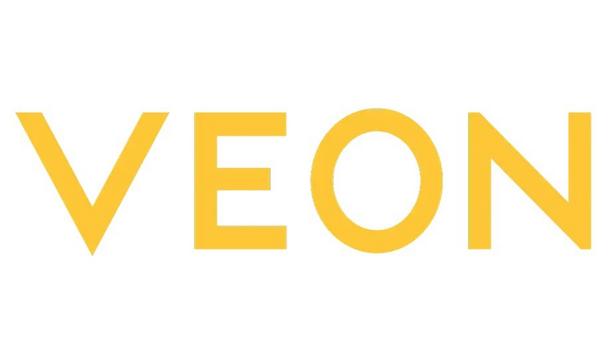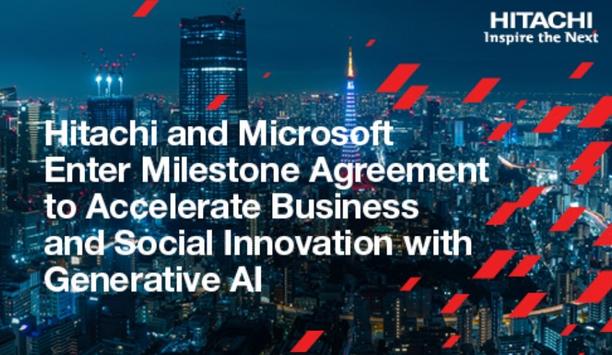Microsoft - Experts & Thought Leaders
Latest Microsoft news & announcements
In an era where bytes travel faster than sound waves, the communications industry stands at the vanguard of digital transformation. From fiber optic cables snaking across the seas to the expanding forests of 5G towers, the communications sector is powering innovation across lives, industries and societies. The 5G quantum leap: From faster downloads to redefining industries The fifth generation of mobile networks isn’t just about faster downloads - it's a seismic shift The fifth generation of mobile networks isn’t just about faster downloads - it's a seismic shift. They’re entering a world of massive device connectivity. Communications giants are investing billions to build a digital superhighway. But, beyond speed, 5G will redefine industries. Think remote surgery, autonomous vehicles, and smart cities. The 5G spectrum of mmWave, Sub-6 GHz, and DSS means super-fast speeds, excellent distance coverage, and smooth transitions from the 4G spectrum. The paradigm shift to 5G is bringing about an era of ultra-low latency, massive device connectivity, and augmented reality, with potential use cases that will rock our world. 5G will power smart cities, fuel a future of innovation 5G will power smart cities, fuelling a future of innovation and efficiency. Imagine traffic lights that adjust in real time and energy grids that optimize consumption. It will underpin universal healthcare, taking remote surgeries and patient monitoring from pilot projects to a run-of-the-mill reality. It will make autonomous vehicles the norm and bridge the gap between the physical and digital worlds, making augmented (AR) and virtual reality (VR) experiences even more immersive. The connectivity revolution: Advanced and frontier connectivity Not so long ago, a phone was just a phone. Now, it’s a pocket-sized command center. Communication companies have transformed from carriers to architects of connectivity ecosystems. They stitch together continents with submarine cables, create constellations from satellites, and beam Wi-Fi around the globe. The world is now a rich tapestry of signals, and the communications sector is the weaver. In the quest for seamless communication and global interconnectivity, 5G has captured headlines In the quest for seamless communication and global interconnectivity, 5G has captured headlines. But it isn't the only innovation. It’s part of a broader revolution with a symphony of technologies promising to better connect the world. Take advanced connectivity. It’s the steady progress made in expanding networks. Advanced connectivity Advanced connectivity is like the dependable workhorse that keeps users connected day in and day out. Mobile, broadband, and short-range providers are continuously upgrading infrastructure and rolling out new technologies that provide seamless connections, faster speeds and reduced latency, while supporting more connected devices across the global population. Frontier connectivity Frontier connectivity is, in comparison, more revolutionary. It’s pushing boundaries and venturing into uncharted territories. Its geographical footprint is limited at present, but it promises a transformative impact. It will bring internet access to even the most remote corners of the world. It will connect the unconnected, bridge digital divides, and make the impossible possible. The evolution of voice interaction: Turning mundane voice interactions into dynamic, intelligent conversations Gone are the days of dialing a phone number and speaking to a human operator Gone are the days of dialing a phone number and speaking to a human operator. Or worse still, being met with a soul-destroying robotic interactive voice response (IVR) system telling users to press 1 for billing, 2 for technical support, etc. Modern chatbots have taken the phone out of the picture, replacing a maze of options with a simple typed Q&A back-and-forth. Natural language processing (NLP) Beyond chatbots, natural language processing (NLP) means AI now understands context, accents and colloquialisms. It can decipher spoken words and translate them into actionable commands. The rise of voice assistants, such as Siri, Alexa, and Google Assistant, which engage in conversations and even tell jokes hints at the next stage in the evolution of communication. Already deployed in the field are deep learning, trained on vast datasets, generating machine voices that are virtually indistinguishable from humans. The world is on the precipice of instant translation from verbal or written inputs to and from both widely spoken and minority languages. And AI with emotional intelligence that analyzes voice tones and sentiments, gauging resonance and perceptions at scale. To riff on an old telecoms’ slogan - the future is bright, the future is intelligent AI. Highways in the sky: Converging clouds and satellites The communications industry is consolidating two seemingly disparate innovations - cloud computing and satellite technology - to bring seamless connectivity to the most remote parts of the world. Companies continue to launch satellites, while cloud providers build Edge data centers all over the world — they’re also combining. Partnerships that create seamless connections Major global cloud providers are forging alliances with satellite operators Major global cloud providers like Google, Microsoft, and AWS are forging alliances with satellite operators, such as SpaceX, SES, and Telesat. Such partnerships will extend the cloud’s reach, create seamless connections, and take the world closer to the Edge, where connectivity, data insights, and real-time analytics reach end users at the touch of a button. Northern Sky Research (NSR) predicts that the cloud-satellite market will reach $32 billion and generate upwards of 240 exabytes of traffic by 2031. It suggests Cloud will play a key role in bridging gaps between the traditional aerospace sector, downstream end users, and middle-layer organizations going forward. Unison between Cloud and satellite The unison between Cloud and satellite is shaking up the markets and ecosystem, promising businesses dramatic jumps in efficiency, revenue growth, and agility. It’s also lowering the barriers to entry for space-derived data services and reshaping connectivity, data processing, and digital service delivery across the globe. Guarding the digital borders: Fending off cyber security threats As data flows increase, so do cyber threats. Communications companies encrypt their messages, monitor threats, and fight off would-be attackers. But it’s a cat-and-mouse game. The more connected the world becomes, the more vulnerabilities emerge. Presently, the industry is actively defending the interconnected world, investing in robust defenses, fortifying networks, and implementing more stringent authentication measures. Communications firms Adopt a ‘zero trust’ approach Overall, communications companies are adopting a ‘zero trust’ approach Overall, communications companies are adopting a ‘zero trust’ approach. It’s a model that scrutinizes every access request regardless of location, not trusting any user or device - even those within a network perimeter. It relies on continuous verification, strict access controls, and micro-segmentation. Just like a bouncer checking IDs on every digital door. Over the last decade or so, the world has seen biometric authentication move from spy movies to the palm of people’s hands. More and more were moving away from traditional passwords and multi-factor verification to fingerprint scans and facial recognition. It’s as if communications providers are upgrading from rusty padlocks to state-of-the-art uncrackable safes. AI to play a much larger defensive role Looking forward, the world will see AI play a much larger defensive role, including machine learning algorithms analyzing vast quantities of fast-moving network traffic, detecting anomalies in real time and predicting threats. In collaboration with governments, industry bodies and private businesses, the communications sector will propel information sharing, threat intelligence, and collective defenses. Emergence of advanced technologies like 5G The communications industry is at the forefront, shaping the digital landscape The communications industry is at the forefront, shaping the digital landscape, and its impact will continue to reverberate across all sectors, societies and personal lives. With the emergence of technologies like 5G, advanced and frontier connectivity, voice interaction evolution, and the convergence of cloud computing and satellite technology, the world is witnessing an unprecedented era of innovation. As advancements unfold, it's clear that the communications industry will play a pivotal role in shaping how everyone connects, communicates, and collaborates, now and in the future. Carmel Owens, MD of GlobalLogic Ireland Athlone-based Carmel Owens is the Managing Director (MD) of digital engineering major firm - GlobalLogic in Ireland. Having joined GlobalLogic in 2020, then Sidero, Carmel has more than 20 years’ experience in the IT sector. In 2023, GlobalLogic acquired cloud and software development company - Sidero to expand its European footprint and position it at the forefront of technology innovation in Ireland. Extensive industry experience Carmel Owens previously held senior executive roles with major indigenous and multinational technology players, including SQS (Expleo), Version 1, Dell EMC, and Sungard Availability Services. At GlobalLogic, Carmel Owens is responsible for spearheading continued growth, shaping the company’s strategy, and overseeing daily business operations. Carmel was named Person of the Year at the 2024 Tech Excellence Awards in association with IP Telecom.
VEON Ltd., a global digital operator that provides converged connectivity and online services, announces that VEON, through its 100%-owned subsidiary Kyivstar, plans to increase its commitment to rebuild Ukraine’s digital infrastructure to USD 1 billion over the five years from 2023 through 2027. network and digital services This is an increase from the previously announced USD 600 million investment commitment for the three years between. The commitment will fund investments into the network and digital services, including potential acquisitions or the development of new assets, social contributions, and partnerships. Ukraine Recovery Conference 2024 VEON’s and Kyivstar’s current contributions to Ukraine’s resilience as well as VEON’s future commitment The Chairman of VEON board of directors and VEON founder Augie Fabela, VEON and Kyivstar board member and former U.S. Secretary of State Michael R. Pompeo, and Kyivstar CEO Oleksandr Komarov will attend the Ukraine Recovery Conference 2024 in Berlin to highlight VEON’s and Kyivstar’s current contributions to Ukraine’s resilience as well as VEON’s future commitment to the rebuilding and restoration of Ukraine, including the aforementioned upgraded investment plan. “VEON and Kyivstar support Ukraine’s resilience, recovery, and reconstruction in every possible way, from meeting the vital connectivity needs of the country to serving the population with digital capabilities, from futureproofing our network with OpenRAN partnerships to ensuring energy resilience and continuity, from supporting Ukrainian businesses today to investing in the country’s digital ecosystem for the future,” said Oleksandr Komarov, CEO of Kyivstar. increased investment commitment "Having seen the support of VEON’s international investors, I am proud to note that Kyivstar is a significant example of how a socially responsible business with international investors can support a country through war." “With the power we take from our example, we will join the call at the Ukraine Recovery Conference 2024 for businesses to invest in Ukraine and invest now! I’m happy that we will do so with an increased investment commitment of our own: USD 1 billion over 5 years.” Highlights of Kyivstar’s investments VEON’s Kyivstar was named Ukraine’s largest foreign investor in 2022 and 2023 by Forbes Ukraine, with a capex investment of UAH 12.3 billion over those two years – approximately USD 176 million and USD 174 million in 2022 and 2023, respectively. Highlights of Kyivstar’s investments in Ukraine’s digital infrastructure include the following: Since February 24, 2022, Kyivstar has built 1,895 new LTE base stations and upgraded about 13,200 existing base stations to 4G. Kyivstar has added more than 4,100 residential areas to 4G coverage, and 95% of the population of territories controlled by Ukraine have access to 4G services on Kyivstar's network. The operator aims for near-universal (98%) population coverage in 4G over the next two years. Home and business fixed line users are benefitting from Kyivstar’s roll-out of its high-speed GPON network, which is due to be expanded to seven new cities in 2024. In February 2024, Kyivstar and Rakuten Symphony signed a letter of intent confirming Kyivstar’s interest in procuring and deploying Rakuten Symphony's Open Radio Access Network (Open RAN) technology in its network, which will involve both 4G and 5G technology. Kyivstar invested UAH 1 billion (approximately 27.4 million) in Ukraine’s energy resilience, installing over 2,300 generators and 113,000 batteries to help keep its network running and customers connected, even when Ukraine’s power infrastructure is under attack. Kyivstar invested in Helsi, Ukraine’s pioneering digital healthcare platform, in August 2022. As of March 2024, Helsi has 2.5 million monthly active users on web and OTT platforms, serves nearly 1,600 medical institutions and more than 38,000 medical professionals, and has facilitated 2.5 million digital appointments in the first quarter of 2024. Kyivstar continuously expands the use and capabilities of its self-care platform “myKyivstar” and TV application Kyivstar TV, with nearly 1.5 million monthly active users, and locally relevant content including educational resources. Kyivstar supports Ukrainian businesses with the integration of Amazon Web Services for data processing as well as with Microsoft Azure cloud services. Kyivstar’s Real-Time Kinematic technology is used in a wide range of professional applications, from agriculture to demining operations. Kyivstar’s total customer support and CSR initiatives since February 2022 amounted to USD 50 million, including corporate donations and digital facilitation of customer donations to Ukraine’s demining, raising more than UAH 180 million (USD 4.8 million) from 2023 to 2024 for “We Live Here” demining project of the Come Back Alive Foundation.
Hitachi, Ltd. and Microsoft Corporation announced a projected multi-billion dollar collaboration over the next three years, that will accelerate social innovation with generative AI. Through this strategic alliance, Hitachi will propel growth of the Lumada business, with a planned revenue of 2.65 trillion yen (18.9 billion USD) in FY2024, and will promote operational efficiency and productivity improvements for Hitachi Group’s 270 thousand employees. Providing innovative solutions Specifically, Hitachi will embed the Microsoft cloud, Azure Open AI Service, Dynamics 365, Copilot for Microsoft 365, and GitHub Copilot into Lumada solutions to provide innovative solutions for the energy, mobility and other industries to deliver better outcomes for businesses and society. In addition, the two companies will promote joint projects to address pressing business needs In addition, the two companies will promote joint projects to address pressing business needs such as bolstering cloud services, enhancing security, and mitigating the environmental footprint of data centers, which have become an increasing area of focus with the growing use of generative AI. Accelerate social innovation “Hitachi has been driving transformation by applying AI across the Hitachi Group to improve productivity and will invest 300 billion yen (2.1 billion USD) in GenAI to capture new growth opportunities in FY2024. Hitachi and Microsoft have already been working on a variety of co-creation projects including the development of next-generation digital solutions for the manufacturing and logistics fields, and the development of a field-extended metaverse that runs on Microsoft Teams,” said Keiji Kojima, President and CEO of Hitachi. “Under this new agreement, we are excited to further accelerate social innovation by expanding our efforts to social infrastructure areas such as energy and mobility, and by applying generative AI, to improve the productivity of frontline workers, which will become even more important in the future. By combining our capabilities, we can help solve the issues faced by our customers and society, and contribute to a more sustainable future.” Improving operational efficiency “We are entering a new era of AI with the promise to deliver transformative business outcomes across every role and industry,” said Satya Nadella, Chairman and CEO, Microsoft. “Our expanded partnership with Hitachi will bring together the power of the Microsoft Cloud – including Microsoft Copilot – with Hitachi’s industry expertise to improve the productivity of 270,000 Hitachi employees and help address customers’ biggest challenges, including sustainability.” Hitachi’s Generative AI Center and Microsoft will collaborate to improve operational efficiency and application development within the Hitachi Group by using Copilot for Microsoft 365 and GitHub Copilot. Hitachi will also use Azure OpenAI Service to enhance its customer service. As part of Hitachi’s group-wide transformation, Hitachi will combine Azure OpenAI Service and GitHub Copilot with its systems development expertise to maintain high quality and improve productivity for mission-critical system development. Enhancing equipment monitoring Hitachi Rail is leveraging GenAI for predictive maintenance, enhancing equipment monitoring Hitachi’s internal validation confirmed that when its detailed system design knowledge was incorporated with Microsoft Azure OpenAI Service and GitHub Copilot, the application source code could be properly generated 70-90% of the time, resulting in high quality output. Hitachi Rail is leveraging GenAI for predictive maintenance, enhancing equipment monitoring and refining forecast accuracy. This proactive approach prevents breakdowns, increases service quality, reduces operating expenses, and augments safety. For example, a cloud-based platform on Microsoft Azure was utilized to streamline data visualization and analysis, empowered by AI to furnish data-driven insights to digitally monitor rail infrastructure. These insights were translated into actionable steps for Network Rail, enhancing decision-making for predictive maintenance of overhead lines. Develop innovative digital solutions Hitachi is enhancing its Lumada solutions by incorporating the capability of generative AI. As part pf the initiative, Hitachi has already started to use Microsoft’s Generative AI for JP1 Cloud Services, a SaaS version of JP1, its integrated operations management software with approximately 20 thousand customers. Hitachi is enhancing its Lumada solutions by incorporating the capability of generative AI This will accelerate response times to address failures, and enable improved operational efficiencies for IT departments, financial and public institutions. In an internal verification test conducted earlier, Hitachi confirmed that the time required for the operator to make an initial response to an alert was reduced to approximately two-thirds by using generated AI to respond to the alert and displaying the source of the citation, such as a manual, that provided the basis for the response. Reliable and sustainable energy In addition to this, Hitachi and Microsoft will also support the energy transition with improved access to and strengthening of digital solutions for asset performance management, energy trading, and risk management to reduce downtime and increase profitability.0 Increased computing power and cloud infrastructure are both critical to scaling these applications. Hitachi Energy’s Enterprise Software Solutions technology and its partnership with Microsoft is key to optimizing the energy network, from generation, through transmission and distribution, and ultimately in delivering reliable and sustainable energy to customers. Aim of sustainable innovation As the impact of CO2 emissions from AI on the global environment increases Multiple Hitachi Group Companies including GlobalLogic, Hitachi Digital Services, and Hitachi Solutions, deliver a wide range of digital engineering, IT & managed services, and application services for the cloud. Additional development efforts through this partnership will focus on enhancing this broad range of services with the aim of sustainable innovation with Microsoft. As the impact of CO2 emissions from AI on the global environment increases, Hitachi and Microsoft will work toward zero carbon, starting with a data center project in Europe, to reduce environmental impact. Hitachi will train more than 50 thousand GenAI Professionals. As part of the partnership, Hitachi will incorporate training to acquire advanced software development skills using GitHub Copilot and Azure OpenAI Service into the program to develop GenAI Professional, talents who support customers’ transformation using AI.







